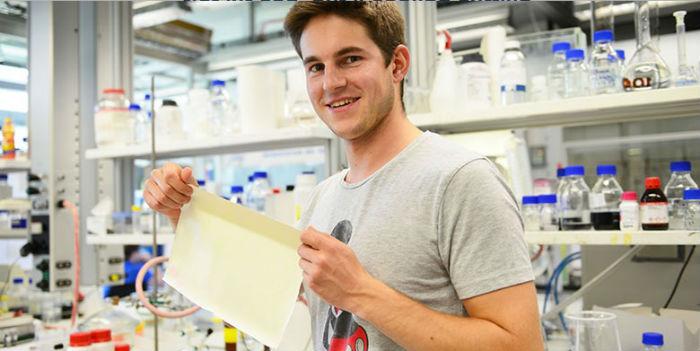 International. A PhD student at the Federal Polytechnic School of Zurich, in the Laboratory of Functional Materials, has developed an alternative to electric air conditioning: a cooling curtain made of a triple-layer porous membrane.
International. A PhD student at the Federal Polytechnic School of Zurich, in the Laboratory of Functional Materials, has developed an alternative to electric air conditioning: a cooling curtain made of a triple-layer porous membrane.
Student Mario Stucki combined two layers of hydrophobic (water-repellent) polyurethane with an intermediate layer of hydrophilic polymer (which attracts water). The resulting membrane feels dry, although it is saturated with water, and since the outer layers are covered with holes about a micrometer in diameter, water can escape from the middle layer into the environment.
When Stucki realized how well water transport works through the various layers, he came up with the idea of the cooling curtain. "Evaporating water requires a lot of energy," he says. "The heat is extracted from the air, cooled and at the same time humidifies the surrounding area." Conventional humidifiers work the same way, but need a lot of power, while Stucki's system is passive. "Sunlight falling through a window to the curtain provides enough energy for this type of air conditioning."
Stucki attracted attention in 2013 with his master's thesis at ETH Zurich, when he developed a new material for outdoor use in an instant. In contrast to conventional functional textiles, it does not contain fluorine compounds, which are harmful to the environment and human health.
His current research makes use of that invention: he functionalized his textile using markers, for which he mixed tiny particles of limestone into the liquid polymer, which was later transformed into the textile. The limestone particles are then removed from the solid material with chlorhıdric or acetic acid, so that small holes are formed at the sites of the nanoparticles. These are necessary for the material to work and "breathe". The outer walls of the cooling curtain are made of this porous material so that the middle hydrophilic layer can supply water to the surrounding area.
Stucki used a method developed in 2012 by ETH professor Wendelin Stark and his group to combine the different layers into a single material. These layers are not glued together, as is usual in industrial processes; instead, they are placed on top of each other in a suitable solvent, so that the outer layers are slightly dissolved and connected to the middle layer. This is the only way researchers can ensure that the outer membrane material remains porous.
Stucki was able to test the basic functionality of the cooling curtain by experiment. He put the triple-layer membrane in a water bath and measured the water loss in the surrounding area at 30 ° C and 50 percent humidity (between 1.2kg and 1.7kg of water per day and square meter). The researchers calculated the results based on a cubic house with a wall length of 10 m. At an outside temperature of 40°C and an indoor temperature of 30°C, the curtain surface of 80m2 was sufficient to dissipate more heat than that supplied by sunlight, meaning that the house was passively cooled.
Source: ETH Zurich.














